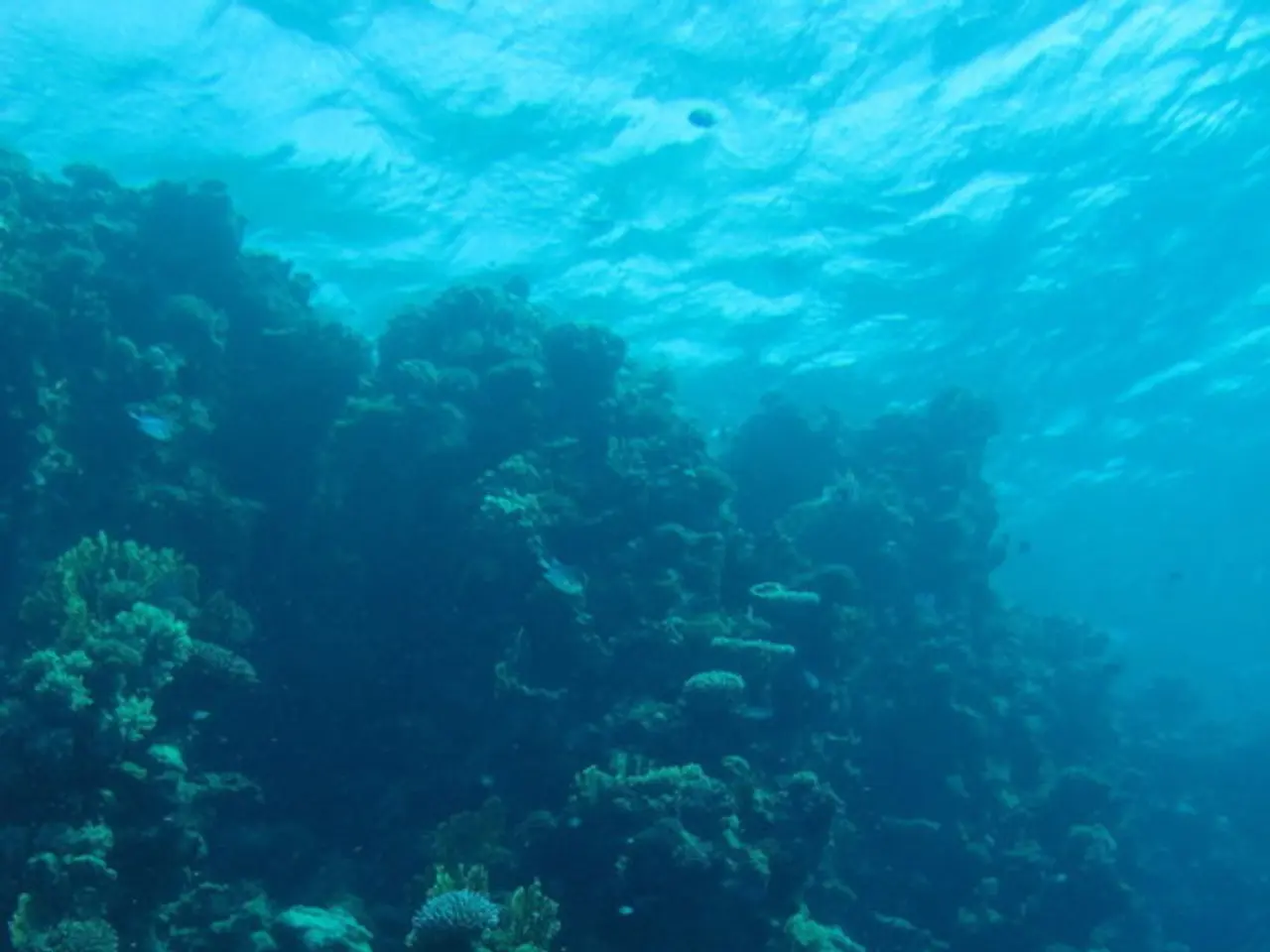Researchers at Scripps granted almost $5 million to investigate causes of deadly, harmful algal outbreaks
Oceanic algal blooms, while often beautiful to behold, can turn deadly due to the production of toxic chemicals by certain algal species and oxygen depletion caused by their dense growth and decay. These harmful blooms can have devastating effects on marine life, as well as on human health.
One of the key factors causing some blooms to become deadly is the presence of excess nutrients, such as nitrogen and phosphorus, from agricultural runoff and natural upwellings. This stimulates explosive growth of harmful algae, which can release damaging chemical compounds. For example, the species Karenia mikimotoi releases harmful compounds such as hydrogen peroxide and hemolysins, while Karenia brevis produces potent neurotoxins (brevetoxins) that can accumulate in shellfish and affect humans through consumption or inhalation of airborne toxins.
Even non-toxic blooms can cause "dead zones" by blocking sunlight and depleting dissolved oxygen in the water as they die and decompose, suffocating marine life. In 2015, a large toxic algae bloom caused significant damage to the U.S. western coastal economy.
To address this issue, a research project at the University of California San Diego, funded by NOAA, is investigating the chemical composition and mechanisms underlying harmful algal blooms. The project, led by Bradley Moore and his team, studies how ocean chemistry changes can cause algae to switch from producing oxygen to releasing damaging chemical compounds. By understanding these biochemical interactions and environmental triggers, the research aims to improve forecasting and mitigation strategies for harmful blooms, reducing their impact on marine ecosystems and human health.
The geographic scope of the project includes coastal waters from Monterey Bay to Santa Barbara to Del Mar. The team will conduct laboratory experiments to understand cellular and physiological triggers for domoic acid production, a toxin produced by the diatom Pseudo-nitzschia that can cause memory loss, seizures, and death in larger mammals when consumed.
The research is part of NOAA's Ecology and Oceanography of Harmful Algal Blooms (ECOHAB) program. Semi-permanent instruments called Wirewalkers, developed at Scripps, will be deployed in the ocean along the geographic range. These robots will help detect and follow subsurface algal blooms, providing valuable data for the researchers.
Monterey Bay Aquarium Research Institute will supply a torpedo-like, long-range autonomous underwater vehicle for the research. The team plans to set out on a series of month-long sea expeditions in open water to search for harmful blooms in the fall and following spring.
The goal of the project is to uncover a "lag" or a period in which scientists can predict a bloom is about to happen. To achieve this, the team will sample deeper water to detect subtle changes in gene expression related to harmful algal blooms. They will also sequence the genome of Pseudo-nitzschia strains to better understand the diversity and distribution of domoic acid-related genes.
The team will test near a variety of wastewater discharge hotspots along Orange County in Southern California. Scripps Oceanography is one of the world's most important centers for global earth science research and education, and this project continues its efforts to understand and mitigate the effects of harmful algal blooms.
Scientists do not yet know why some algal blooms suddenly become deadly, but this research project is a significant step towards finding answers and developing strategies to protect our oceans and the life they support.
- This research project at the University of California San Diego, funded by NOAA, is undertaking oceanographic research to understand the mechanisms behind harmful algal blooms, which can impact both marine life and human health due to the production of toxic chemicals and oxygen depletion.
- The project, led by Bradley Moore and his team, aims to uncover a "lag" or period that can predict an upcoming harmful algal bloom, thus improving forecasting and mitigation strategies for climate change-related environmental issues.
- The team will focus on the diatom Pseudo-nitzschia, which produces the toxin domoic acid, linking their study to medically relevant neurological disorders, such as memory loss, seizures, and death in larger mammals when consumed.
- By sequencing the genome of Pseudo-nitzschia strains and studying cellular and physiological triggers for domoic acid production, the research also contributes to the field of environmental science, shedding light on the diversity and distribution of strains responsible for health-and-wellness concerns related to harmful algal blooms.




